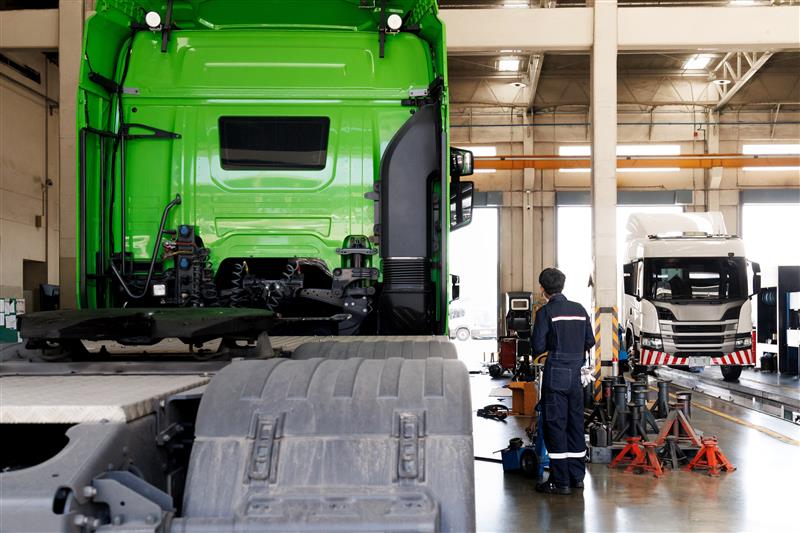DVSA Guide to Maintaining Roadworthiness – Update
05 November 2024
The Driver and Vehicle Standards Agency (DVSA) Guide to Maintaining Roadworthiness (Guide) is a non-exhaustive document that helps explain how to keep vehicles roadworthy. It is intended for use by operators, drivers, and others responsible for maintaining commercial and passenger vehicles. As we mentioned in our BACK on air webinar on 1 November 2024, we have been expecting the Guide to be updated and this has now been released on 5 November 2024.
To take the hassle out of operators working out what has changed and also to encourage thought provoking debate around the important issue of maintenance, we are running a short free BACK on air “Guide to Maintaining Roadworthiness – What’s changed?” special on 7 November at 12 noon. Please register here.
If you can’t wait that long, below, we set out the basics of the key changes below which include: safety inspections and repair facilities; and braking performance assessment.
Safety inspections and repair facilities
Advice has been added to the Guide on outsourcing maintenance work to section 5 specifically:
“If you decide to use a contractor, you are still responsible for the condition of vehicles that are inspected and/or maintained for you by your agents or contractors. Care must be taken to ensure that the facilities used by the contractor are adequate, this includes any work carried out by subcontractors.”
Amongst other things, this highlights the importance of picking the correct maintenance provider and working with them. Operators should be making sure they are getting the correct paperwork back from maintenance providers and actually reading and if need be, questioning it.
Braking performance assessment
Whilst the industry has been aware for some time now of the upcoming changes to brake testing, guidance has been added on using a decelerometer has been added to section ‘5.3 Braking performance assessment’ which now states:
“It is acceptable to use an approved and calibrated decelerometer to measure overall brake efficiency values for rigid vehicles without trailers or for vehicles that cannot be tested on a roller brake tester (RBT). A decelerometer will measure the overall brake efficiency but it may not identify individual braking issues.
A temperature check needs to be carried out before and after the decelerometer test to help identify if individual brakes are operational. Final brake temperature readings need to be significantly higher than the initial readings to properly assess the brake performance, with relatively consistent readings taken for each brake across an axle. Where satisfactory results cannot be achieved another method to assess the brake performance needs to be used.”
We often see operators using decelerometers as a method to assess the brake performance though many forget that a temperate check needs to be done beforehand, so this is a key takeaway from the updated Guide.
A new section has been added providing additional best practice guidance at ‘5.3a Braking performance assessment from April 2025’ which states:
“To follow best practice and comply with legislation there is an expectation that every safety inspection will include a brake performance assessment using either an RBT, a suitable electronic brake performance monitoring system (EBPMS) or a decelerometer with temperature readings.
If EBPMS is not used it is expected there is a minimum of 4 laden brake tests spread evenly across the year, this can include the annual test.
Where a laden brake test is not carried out a risk assessment detailing the reasons, must be completed by a competent person who understands braking systems and components (for further details see below).
If using EBPMS to monitor brake performance, there must be an evaluation of the vehicle/trailer performance report before every safety inspection by a competent person who can interpret the data. The evaluation must be signed, dated, and attached to the vehicle record together with the performance data report. The evaluation and data report may be a single document.
To allow flexibility vehicles can be presented for brake testing up to 14 days before the safety inspection date; this allows the operator to conduct a laden brake test during the vehicle/trailer normal activities without the need to specially load it.
It is the operators’ responsibility to ensure that the braking performance of any vehicle or trailer meets the applicable requirements of The Road Vehicles (Construction and Use) Regulations 1986, Section 18, Maintenance and efficiency of brakes.”
This updated guidance has been well expected though more guidance has been added to the Guide on how to use EBPMS to section ‘5.4 electronic braking performance monitoring system (EBPMS)’.
There is also an update to section ‘6.2 What happens at the end of the test’ to show that test certificates are no longer printed out when a vehicle passes a test.
Helpfully, an example risk assessment has been added to ‘Annex 7 performance risk assessment’. This annex specifically asks for the reason as to why a roller brake test has not been completed which is sure to be interrogated and questioned by the DVSA and/or a Traffic Commissioner if a roller brake test is not present following the changes to brake testing that come into force from April 2025.
We will provide a more detailed commentary on the changes in due course, but our initial conclusion is that the changes were largely as anticipated and our advice to operators is always to read the Guide as a reminder of the expectations placed upon them. Please contact the regulatory team here if you would like any further advice. You can find the Guide here.
This article was written by Amy Smith and Jo Dawson-Gerrard.
